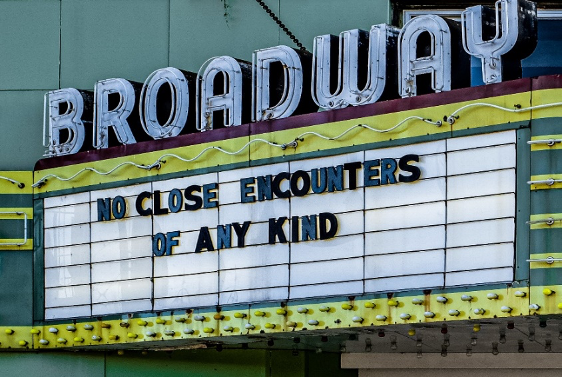Seminar Blogs
“The Cost of ‘Going Dark'” – Polyniki Katrantsioti
Manuela Infante’s seminar on the play Estado Vegetal offered a lot of information on new theatre practices and how the method of a “branching out” play challenges the traditional theatre practice. By being fragmented but not fragmentary, Estado Vegetal can be cut into pieces without it losing its rhythm and linearity. Since we were able to watch a recording of a play, rather than watching a live performance I would like to place focus on one of the points made by Infante on how theatre is struggling under the current crisis of Covid-19. As she mentioned herself, video performance changes the power dynamic of theatre: in the theatre, one has to wait for the action to take place as in normal circumstances it is very difficult to walk out of a performance if it does not impress you in the first ten minutes. The audience is in a way captive. Video recordings of performances have significantly damaged this capacity of the theatre and in a way degraded this theatre dynamic.

Same as in all live performances, Covid-19, has put a huge toll on the theatre industry that is now at risk of depletion. “The cost of ‘going dark’ is significant” (Lewis 2020). As the article from The Atlantic states a lot of theatre companies have filed for bankruptcy or are on the verge of filing for one (Lewis 2020). Additionally, the new protective measures that are taken by governments have hurt immensely the art economy as well as their hopes for the future. But is digital theatre the answer to “save” the art economy? According to Manuela Infante, it is not. She mentioned that the notion of recorded performances deeply dissolves the reality of theatre. By pushing a more capitalist idea onto theatre it opens the opportunity to the audience to stop the performance whenever they feel like it, when traditional theatre patterns are based around the idea of a “climax” that comes at a later point of a play. In addition to that, the spectator is free to aimlessly scroll through their phone or stop the streaming entirely if it does not meet their standards. This destroys the liveness of theatre as a medium that “asks” the audience to participate by getting emotional, laughing, and interacting with the performance. In the age of Covid-19 “the performing arts are vulnerable because much of the sector relies on live engagement with groups of people in a central place” (Coetzee 2020).
To close on a more positive note, this situation has pushed creators to find alternate ways to express themselves: festivals like FOLDA (Festival of Live Digital Art) and performances being streamed on YouTube by the National Theatre company or performed on platforms like Zoom. “With theatres thinking about a return to physical spaces, it is worth considering how the “digital turn” will impact future spectator conventions and expectations” (Jacobson 2020). Maybe the future of theatre will lie on a bimodal form that would combine the two: safekeeping the liveness of the audience while also engaging the online crowd by allowing them to re-watch a performance or access a performance from a remote location.
References
- Coetzee, Marié-Heleen. 2020. “Theatre in the time of COVID-19: Should the show go on?” The University of Pretoria, August 12, 2020. https://www.up.ac.za/news/post_2914407-theatre-in-the-time-of-covid-19-should-the-show-go-on-
- Jacobson, Kelsey. 2020. “Theatre companies are pushing storytelling boundaries with online audiences amid COVID-19.” The Conversation, July 21, 2020. https://theconversation.com/theatre-companies-are-pushing-storytelling-boundaries-with-online-audiences-amid-covid-19-141583
- Lewis, Helen. 2020 “When Will We Want to Be in a Room Full of Strangers Again?” The Atlantic, May 12, 2020. https://www.theatlantic.com/international/archive/2020/05/theater-survive-coronavirus-art-west-end-broadway/611338/.
*Image credits: No Close Encounters of Any Kind on marquee of Broadway Theatre – Mt. Pleasant, MI (49730008467).jpg” by Dan Gaken from Mt. Pleasant, MI, United States is licensed under CC BY 2.0

